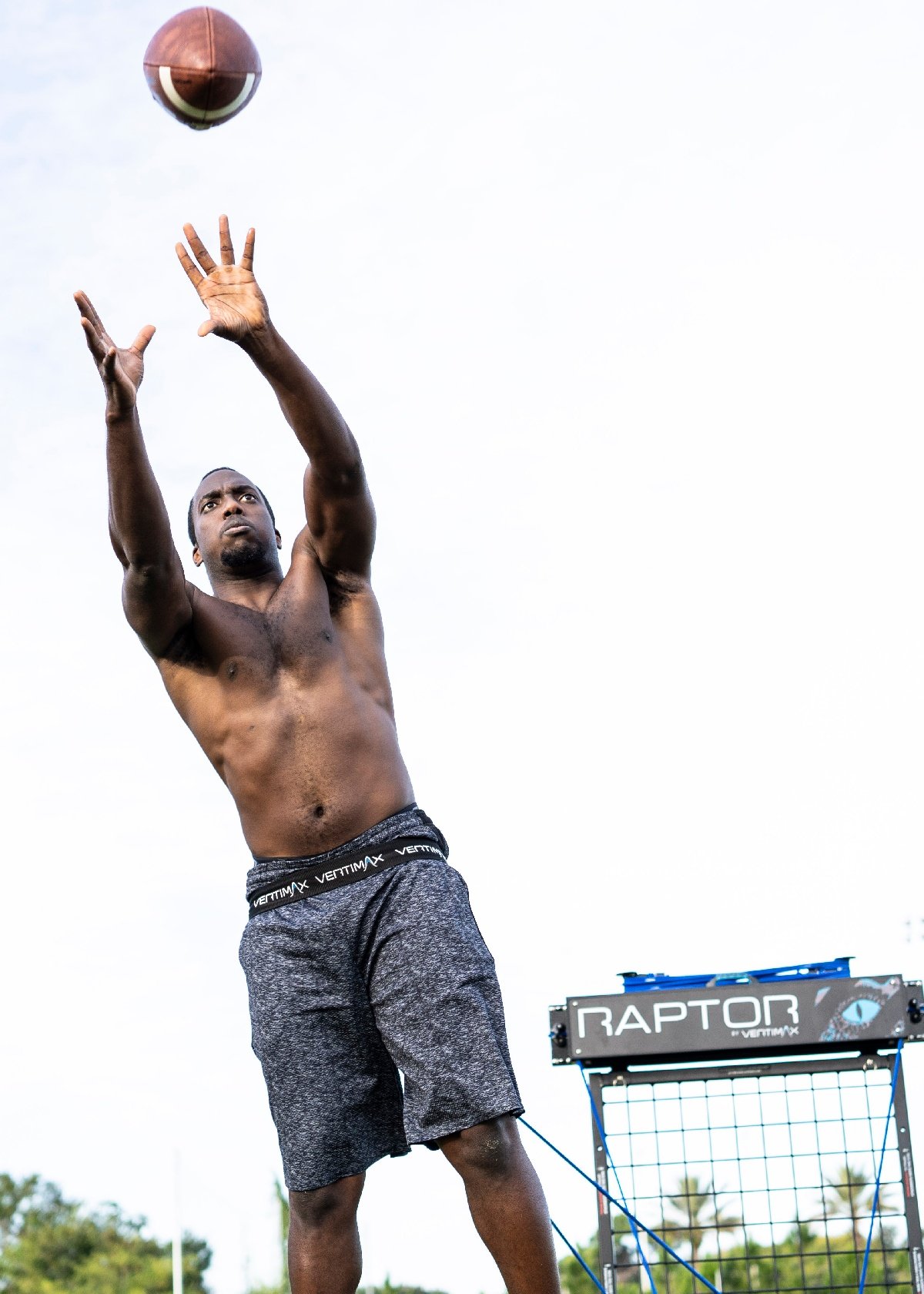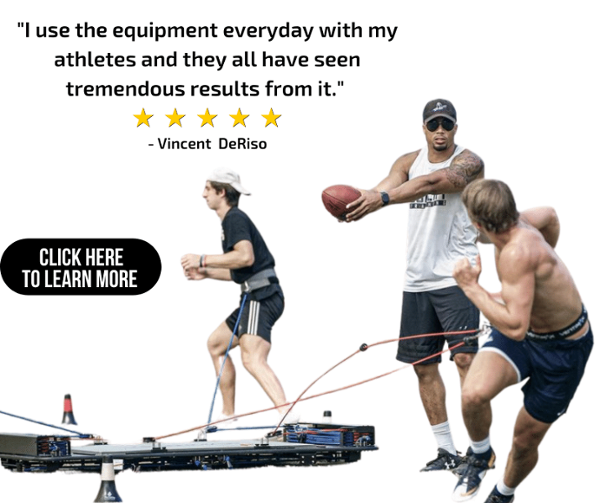A wide receiver has one primary job, which is to outrun the defensive back and get open. However, receivers must also have change-of-direction skills as many of their routes require sharp cuts. Now throw in some agility training to block tackles, and you have the perfect football drills for a wide receiver.
If wide receivers were to compete in track and field, they would be your 100m sprinters.
Wide Receiver Drills To Prevent Injury and Increase Performance
Wide Receivers do a lot of back and forth as well as stop and go movements. If the athlete doesn’t properly prepare for these quick cuts, it can lead to injury. In this video, we offer some quick and easy drills for athletes to do to prevent injury and increase performance.
Football Drills For Wide Receivers
1. Sit-Up and Catch
Often, a receiver must make eye contact with a ball just before they catch it. The sit-up and catch imitate this situation by having a receiver catch a ball after doing a sit-up. As the ball arrives as the receiver just sits up, they have little time to react to catch the ball
- Have a receiver and another teammate stand about 5 yards across from each other
- The receiver will lay on their back while the teammate holds a football
- On command, the receiver will perform a sit-up
- The teammate will throw the ball to the receiver so that it arrives just as they sit-up
2. Wall Ball
This drill can be performed alone and improves the ability of a player to catch an unpredictable ball. This is done simply by a player throwing a football against a wall at different angles and speeds.
- A receiver will stand about 5 feet away from a wall
- They will then throw a football at the wall, which will bounce back
- The receiver must react accordingly and catch the ball
- Use different speeds and angles for a different bounce
- Two receivers can perform this drill where one faces away from the wall until the other throws the ball
3. Cone Footwork Drill
Receivers require advanced footwork to be able to perform cutbacks, explosions, and change of direction. The cone footwork drill will include various skills a receiver must possess to be a proficient player.
- Set up 7 cones as above. These cones will represent defensive players
- Upon a whistle, the wide receiver will sprint straight towards the first cone. This cone will act as a defender straight on, which requires the receiver to outmaneuver his way around.
- The receiver will then run towards the second cone and cut to the right beyond the third cone.
- The receiver will then cut hard to his right at a 90-degree angle and curl back to the fourth cone.
- Then, the receiver turns and sprints to the right, stopping as he reaches it and taking a 90-degree turn to simulate an in route.
- Finally, the receiver will sprint to the fifth cone before stopping and curling around the sixth cone to finish the drill.
-1.jpeg?width=900&name=football%20cone%20drill%20(small)-1.jpeg)
4. Hide & Seek
Hide & Seek will also improve a receiver’s ability to catch a ball upon short notice. However, this differs because the receiver will run a more realistic route, and the quarterback will throw the ball.
- Line up a quarterback and center on the line of scrimmage with a wide receiver in formation to the side
- Place a stand-up dummy about 10 yds downfield in front of the receiver. Try to use a tall dummy
- Upon the snap, the quarterback will drop back and the receiver will sprint downfield towards the dummy
- When reached, the receiver will cut around the outside of the dummy and head inwards at a slight angle
- The quarterback will throw the ball so that it arrives at the receiver just as they wrap around, giving them little time to react to the ball position
- Upon catching the ball, the receiver will then sprint downfield
5. Track the Ball
On deep passes, a receiver has to be able to track the ball in the air. This allows them to adjust their speed and route, which is vital to arrive at the ball. “Track the ball” simply consists of running deep routes. If possible, have the quarterback throw the ball higher than normal to increase the difficulty of tracking the ball.
- Have a quarterback and receiver line up on the line of scrimmage
- At the imitated snap, the receiver will run a deep route
- The quarterback will throw the ball high towards the receiver
- The receiver must track the ball and adjust their position to make the catch
These are just some of the football drills you can use. Head over to our for even more ideas!





.png?width=110&name=Listing%20Image-basketball%20ladder%20drill%20%20(350%20x%20350%20px).png)














